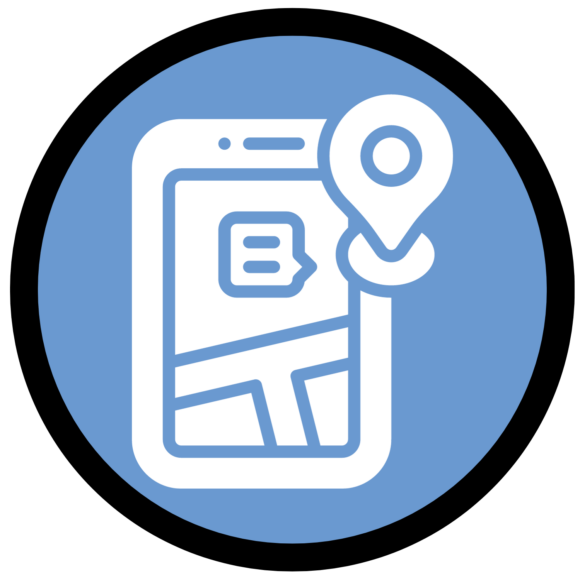
WHAT IS MOBILE CONQUESTING?
You can target people by online behaviors (people who have shown specific behaviors online or are in a certain demographic) and also by offline behaviors (targeting people by where they have been tracked with their phone recently, such as a location, business, or specific brand name stores).
That’s the first layer of Mobile Conquesting. With the second layer, we can add in all sorts of “geo” terms, like geo-fencing, geo-retargeting, and geo-retargeting lookalike, where we put a tight radius around an address to capture device IDs and serve ads to those mobile devices. Some people might question the validity of how a tight radius is determined. Is the advertiser going to have wasted impressions because the radius is cutting into the neighboring business? Or they are counting people in the parking lot of the strip center that the business is located in? Is the radius actually around that business owner’s location? if you are doing geo-fencing for your business you should ask your digital provider what technology method they are using.
WHAT ARE THE DIFFERENT METHODS MOBILE TECHNOLOGY VENDORS USE FOR GEO-FENCING BUSINESSES?
- Radial Fence by Address – The most basic method of location-based geo-fencing is by placing a radius around a place’s address. Since addresses were built to provide directions to the location, many times the physical location is across the parking lot or on the street. Research estimates that there can be up to 84% waste in targeting this way.
- Radial Fence by Geo-Code – This method places a radius around the center of a business or location. Since most locations are not circular, there will inherently be waste. How much waste depends on the size of the radius. Research estimates that there can be up to 75% waste in targeting this way.
- Parcel Mapping -Also known as property mapping and tax mapping are maps typically built to identify property boundaries and is a popular data source for industries such as real-estate. Parcels can often contain many businesses in the same plot. Research estimates that there can be up to 51% waste in targeting this way.
- Polygon Mapping (This is the technology that we use with Mobile Conquesting) – Polygons are formed by tracing the store or place boundary based on satellite images and latitude/longitude and capture the precise boundaries of a location. Percent waste = 0%
WHAT ABOUT TRACKING?
- What about tracking on-site visits of people who have seen the advertiser’s ad and then visited the advertiser’s location? How do we track visits to the actual business, and not surrounding areas?

In-Store mapping is the most granular polygon layer, serving to precisely map the outlines of the business or point or interest.
On Lot mapping is a polygon layer that separates a business from it’s parking lot. In instances of a standalone business, this could be the entire parking lot. For strip malls or adjacent storefronts, this will typically just be the area directly in front of the business.
HOW ARE VISITS VERIFIED?
Once the location signal is matched to a place, the final step is determining whether a visit has actually occurred. The following data is evaluated to determine whether a visit is deemed to be verified:
- Store hours – How frequently does the user visit and for how long? What are the store hours and when did the visit take place? Only visits that occur during open store hours are counted.
- Employee status – Understanding employee status allows (when people work and how often) allows the system to exclude employees.
- Dwell time – How long did the user spend in the store? Dwell time is used to filter for inaccurate visits.
- Speed – How fast was the user moving when he/she was tracked as a visit? If they’re moving faster than then the system’s average speed threshold, the visit is not counted.
- Horizontal accuracy – What is the percent accuracy of the lat/long the system received? If the horizontal accuracy that falls within the polygon that is being tracked is not higher than the system’s average percent threshold, the visit is not counted.
This verification process means that the system has a 94.4% accuracy rate.*
